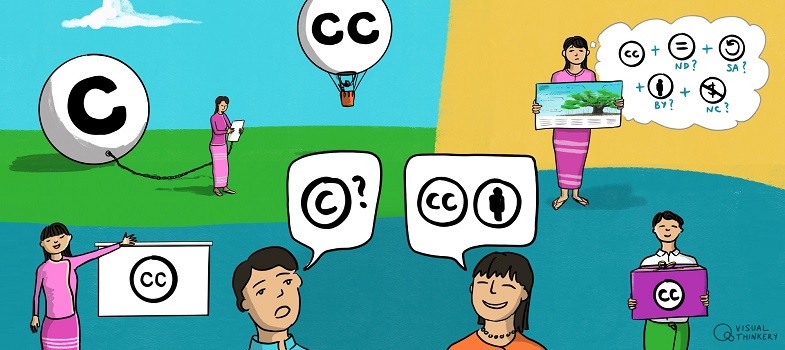What can you do with a work that is in the public domain?
You can do almost anything, but it depends on the scope and duration of copyright protection in the country where the work is used. Depending on the country, for example, a work in the public domain may still be covered by moral rights that last beyond the duration of copyright. It’s also possible that a work is in the public domain in one country, but is still under copyright in another country. This means you may not be able to use the work freely where copyright still applies.
A work that is in the public domain for purposes of copyright law may still be subject to other intellectual property restrictions. For example, a public domain story may have a trademarked brand on the cover associated with the publisher of the book. Trademark protection is independent of copyright protection, and may still exist even though the work is in the public domain as a matter of copyright. Also, once a creator uses a public domain work to turn it into a new work, the creator will have copyright on the portions of their new work that are original to them. As an example, the creator of a film adaptation based on a public domain novel will have copyright protection over the film, but not the underlying public domain novel. You can find out more about trademark protection in the additional resources [Tip: hold Ctrl and click a link to open it in a new tab. (Hide tip)] section in Unit 1.
Author credit and the public domain
Even though it may not be legally required in every country, especially those countries where moral rights do not exist after the term of copyright expires, there are many benefits to identifying and giving credit to the original creator, even after their work has entered the public domain. Many communities have adopted norms, which are accepted standards for crediting the authors and the treatment of works in the public domain. Creative Commons has created public domain guidelines that can be used by communities to create their own norms. Review the CC guidelines here.
Reflection
Can you think of a reason why it might be helpful to give credit to an author whose work is in the public domain? Can you think of why norms should be encouraged when public domain works are reused?
Finding works in the public domain
With millions of creative works whose copyright has expired – and many more added regularly with tools like the CC0 Public Domain Dedication – the public domain is a vast treasure trove of content.
Some sites that host works in the public domain are:
- Project Gutenberg
- Public Domain Review
- Digital Public Library of America
- Wikimedia Commons
- Internet Archive
- Library of Congress
- Flickr
- Rijksmuseum.
The CC Search tool is another way to find public domain material. We will take a look at how to use some of these websites and find public domain and other resources that can be used without violating copyright later on in the course.
It is not always easy to identify whether a work is in the public domain. As we learned, copyright protection is automatic, so the absence of a copyright symbol ‘©’ does not mean that a work is in the public domain.
In addition to its CC0 Public Domain Dedication for creators, Creative Commons also has a tool called the Public Domain Mark, designed to label works whose copyright has expired everywhere in the world, so that reusers can easily identify that those works are in the worldwide public domain. As of 2016, CC’s public domain tools were used on more than 90 million works.
How does something enter the public domain?
